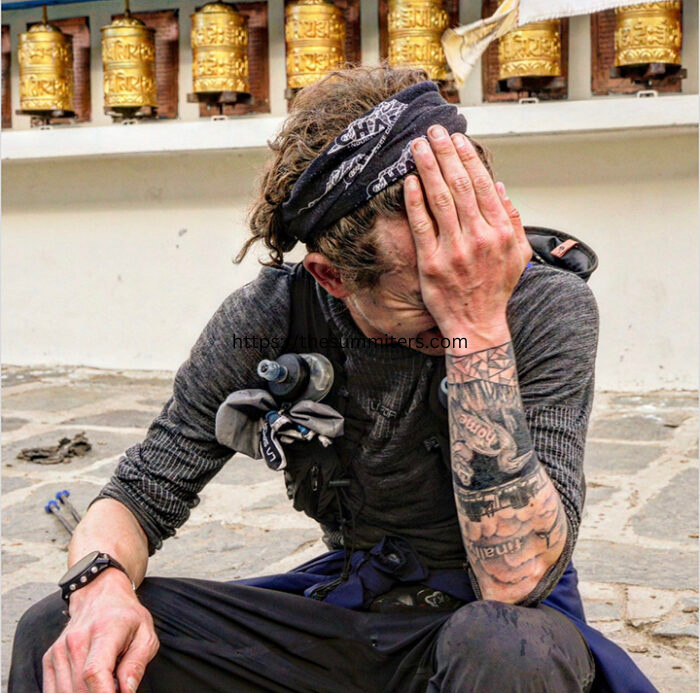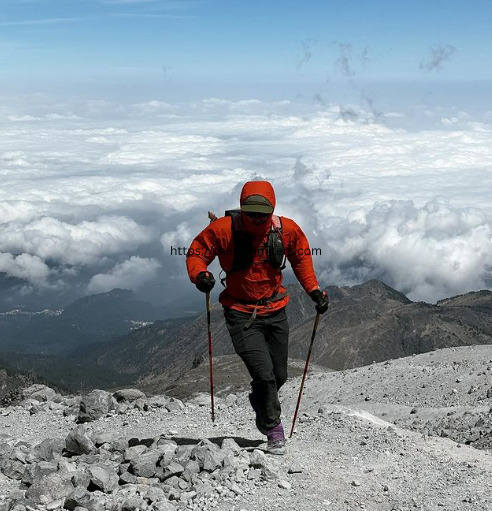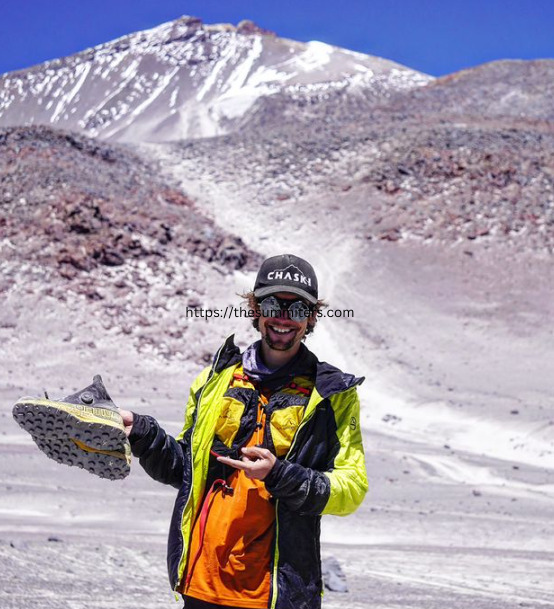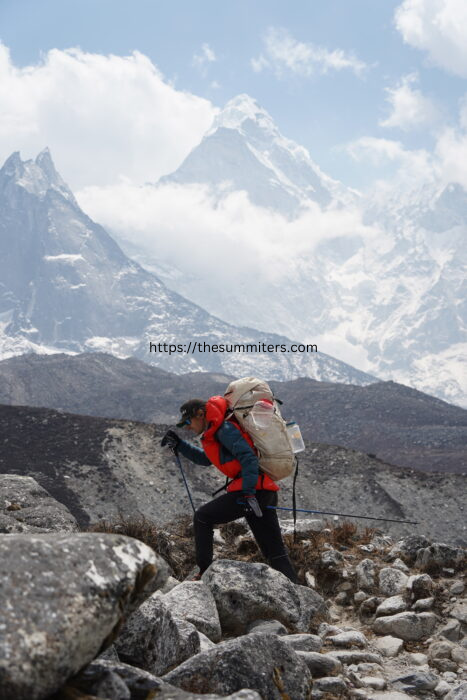Last year, American Tyler Andrews, an ultra runner from the U.S., traveled to Nepal and stumbled upon an exciting opportunity to set new speed records. This spring, he’s gearing up to tackle the challenging ascents of Pumori and Lhotse, accompanied by his partner Chris Fisher. If their stamina allows, they’re even considering a summit attempt on Makalu.
Before embarking on their expedition to Base Camp, we caught up with Andrews and Fisher to learn more about their ambitious goals and preparations for this demanding adventure.
Setting a New Record by Running Everest
Following a rewarding running expedition in Chile’s Atacama Desert, Andrews and Fisher embarked on their next adventure in Nepal. Upon arrival, Andrews wasted no time and dove into the Ultra Everest Race. Covering a challenging 70km route with a staggering 3,800m of elevation gain and loss, this race operated under the Fastest Known Time (FKT) format, allowing participants a two to three-week window for their attempts.

“I decided to tackle it on the final day of the window, and luckily, I clinched the win,” Andrews shared.
The race served as a significant test for Andrews, pushing him beyond distances he had previously run this year. Opting for a nocturnal start, Andrews and Fisher began their journey at 7 pm, wrapping up at 8 am the next morning.
We chose to run at night to acclimate to colder temperatures and hone our skills in navigating in darkness, Andrews explained. Plus, the quiet of the night meant we could avoid the daytime hustle and bustle of tourists and yaks on the trails.
Currently, Andrews and Fisher find themselves acclimatizing on smaller peaks while awaiting the readiness of routes on Pumori and Lhotse. Unfortunately, progress on the Khumbu Icefall route has been hindered by delays, and the path up Pumori remains to be fixed by sherpas.
We anticipate the Pumori route to be prepared by the end of April, Fisher noted.

Facing each other, Pumori and Lhotse provide Andrews and Fisher, stationed at Everest Base Camp, with the flexibility to alternate their climbing expeditions based on prevailing conditions.
Climbing Independently
Last year, Andrews had a sherpa with him who relied on oxygen. But this time around, Andrews and Fisher are taking on the challenge solo.
“After our successful collaboration in Atacama, where we achieved some remarkable Fastest Known Times, like Ojos del Salado in just 2 hours and 22 minutes, we’re ready to tackle this new adventure,” Andrews shared. “Chris brings a wealth of alpine expertise, which complements my skills perfectly.”

Despite both being seasoned skyrunners, their focus is on teamwork rather than competition.
“While we might consider solo runs if we venture to Makalu, for now, we’re committed to supporting each other every step of the way,” Andrews added.
Fisher stressed the arduous nature of these climbs, emphasizing safety above all else.
“Our motto is simple but crucial: ‘Go fast, stay safe’,” Fisher affirmed.

They’re opting to climb without supplemental oxygen, intending to complete the ascent in a single push. “It’s going to be a grueling challenge,” Fisher admitted.
“We anticipate acclimating well up to Camp 3, thanks to our training regimen, including the demanding Tres Cruces traverse in Atacama, where we spent over 18.5 hours traversing three peaks, most of them towering above 6,000m,” Fisher explained.
Fisher also recounted his winter exploits, including conquering all of Colorado’s 14,000-foot peaks and embarking on numerous 20-hour ski tours. You can catch a glimpse of their swift traverse of Tres Cruces in the video below.
Previous Achievements
In the world of mountain climbing, chasing Fastest Known Times (FKTs) is a relatively recent trend, making it a bit of a challenge to determine who holds the records for Pumori and Lhotse. It all hinges on various factors like logistics, climbing approach, and the starting point of the journey.

However, Fisher shed some light on notable accomplishments. Dawa Steven from Seven Summit Treks made an impressive ascent of Pumori, completing it in approximately 30 hours, taking a well-deserved rest at a higher camp from Everest Base Camp. Additionally, we’ve reached out to Lucien Boucansaud to get insights into his solo timing for Pumori from last fall.
Shifting to Lhotse, Fisher referred to a remarkable feat achieved by a legendary climber. Back in 1996, Anatoly Boukreev from Ukraine conquered the peak in a jaw-dropping 20 hours and 45 minutes. What’s even more astounding is that he accomplished this “just two days after summiting Everest without the use of oxygen!” Fisher emphasized the extraordinary nature of Boukreev’s achievement.
While Andrews and Fisher are contemplating the possibility of attempting Makalu, it’s not their primary focus like the first two climbs. “That would truly be the cherry on top,” Fisher expressed. He clarified that they would only embark on the Makalu challenge if their preceding climbs went smoothly and they maintained their physical strength and energy.